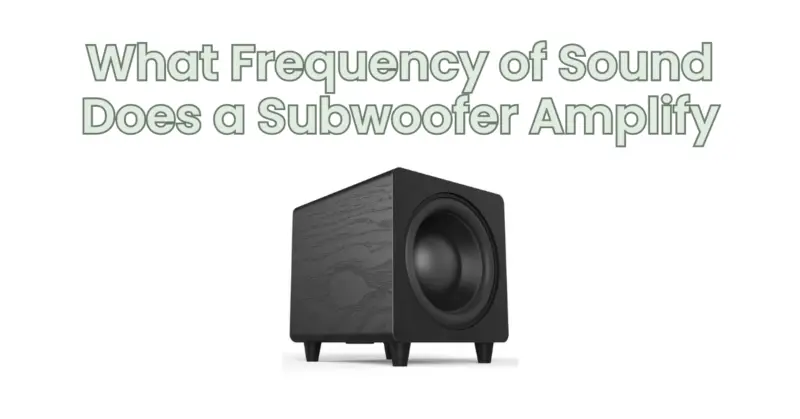A subwoofer is specifically designed to amplify and reproduce low-frequency sounds, typically referred to as bass. These low-frequency sounds add depth, impact, and realism to your audio system, enhancing your overall listening experience. In this article, we will explore the frequency range that a subwoofer amplifies and why it plays a crucial role in your audio setup.
Understanding Frequency Range: Sound is made up of vibrations or waves that travel through the air. These waves are characterized by their frequency, measured in Hertz (Hz). Frequency refers to the number of vibrations or cycles per second. Higher frequencies have more vibrations per second, resulting in higher-pitched sounds, while lower frequencies have fewer vibrations per second, producing lower-pitched sounds.
The Subwoofer’s Role: A subwoofer is dedicated to reproducing the lowest frequencies in the audio spectrum. Its purpose is to provide deep, powerful, and accurate bass reproduction, which can significantly impact the overall quality of your audio system. By handling the low-frequency sounds, a subwoofer allows the main speakers to focus on mid-range and high-frequency sounds, resulting in a more balanced and immersive audio experience.
Frequency Range of a Subwoofer: The frequency range that a subwoofer amplifies can vary depending on the specific model and design. However, most subwoofers typically handle frequencies in the range of 20 Hz to 200 Hz or higher. The lower end of this range, from 20 Hz to around 80 Hz, is where the subwoofer excels, delivering deep, resonant, and tactile bass that can be felt as well as heard.
The Importance of Low Frequencies: Low-frequency sounds play a vital role in music, movies, and other audio content. They provide the foundation, impact, and dynamics that make the audio experience more immersive and engaging. Whether it’s the rumble of a thunderstorm, the deep notes of a musical bassline, or the explosive effects in an action movie, the subwoofer ensures that these low-frequency sounds are faithfully reproduced.
Integration with Main Speakers: To achieve a seamless integration between the subwoofer and the main speakers, it is important to set the crossover frequency appropriately. The crossover frequency determines the point at which the low-frequency sounds are redirected from the main speakers to the subwoofer. This ensures that the main speakers focus on reproducing frequencies within their optimal range, while the subwoofer handles the low frequencies. Refer to the manufacturer’s recommendations or experiment with crossover settings to find the ideal balance for your system.
Benefits of Subwoofer Amplification: Amplifying the low-frequency sounds through a dedicated subwoofer offers several benefits:
- Enhanced Bass Response: A subwoofer significantly improves the bass response, delivering deep and impactful low frequencies that can transform your audio experience.
- Improved Sound Balance: By offloading the low frequencies to the subwoofer, the main speakers can focus on mid-range and high-frequency sounds, resulting in better sound balance and clarity.
- Immersive Audio Experience: Low-frequency sounds create a sense of realism and immersion, allowing you to feel the impact and depth of the audio content.
- Reduced Distortion: Subwoofers are designed to handle low frequencies more efficiently, reducing distortion and ensuring cleaner, more accurate bass reproduction.
- Room Filling Bass: Subwoofers have the power to fill the room with bass, creating a more engaging and enveloping listening experience.
In conclusion, a subwoofer amplifies the low-frequency sounds, adding depth, impact, and realism to your audio system. By handling the lower end of the frequency spectrum, the subwoofer complements the main speakers and allows them to focus on mid-range and high-frequency sounds. Understanding the role of the subwoofer and its frequency range enables you to optimize your audio setup for a more immersive and satisfying listening experience.


